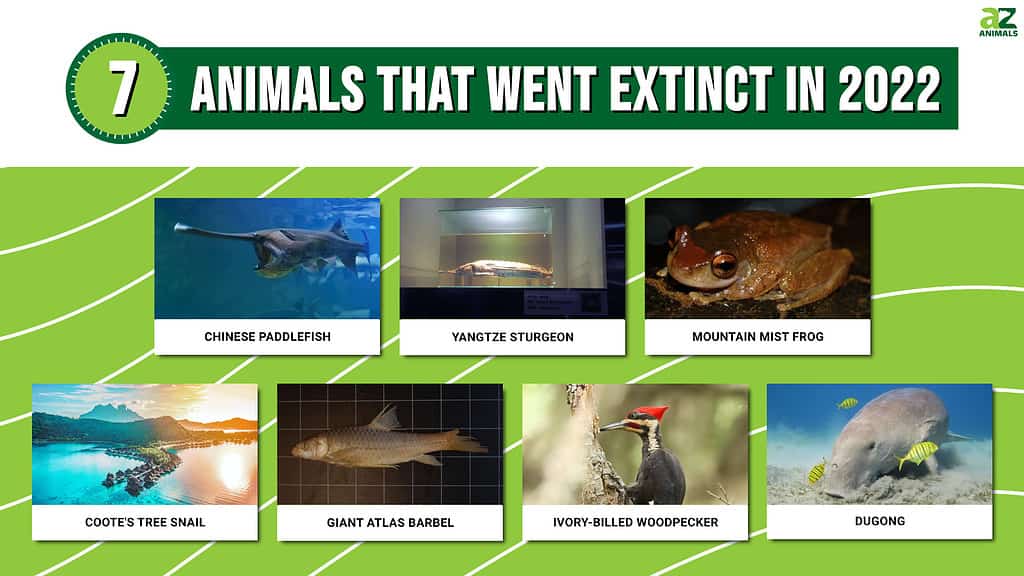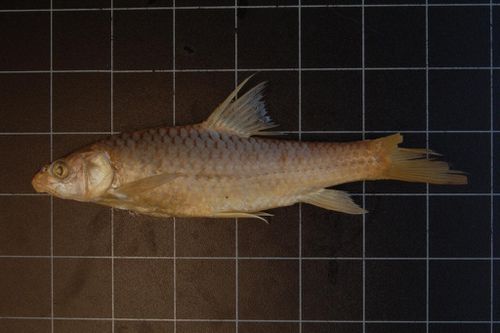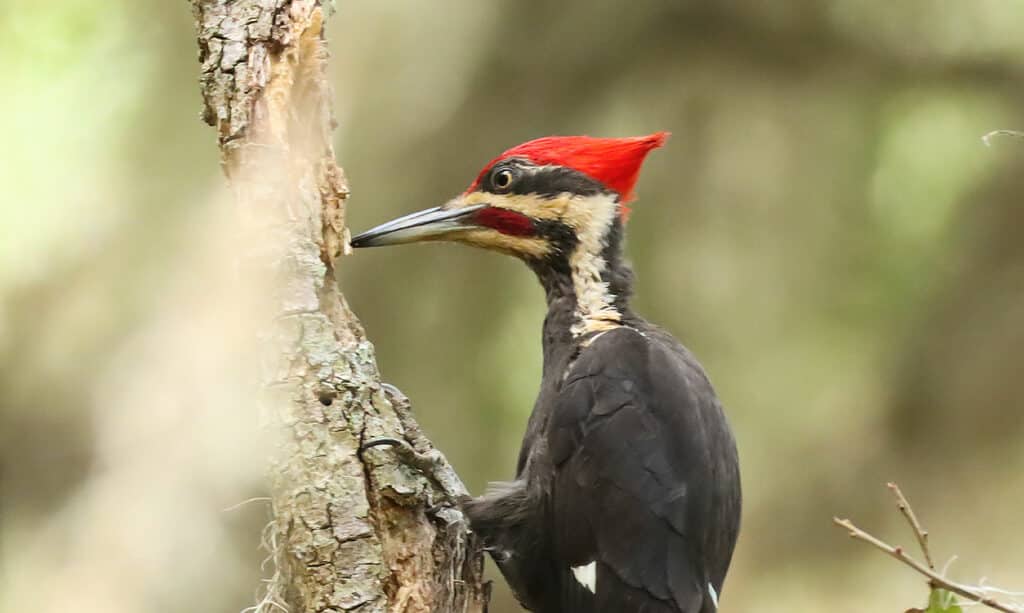Unfortunately, animals go extinct every single year, often due to human activity. As we move towards a more sustainable future, we can hopefully change our track record as a species! Still, in the meantime, it’s important to note and document the species that didn’t make it in order to understand and appreciate what we have and what we have lost. Today, we are going to look at some of the animals that went extinct in 2022. Let’s get started!

The List
Here’s our list of animals that went extinct in 2022. Sadly, almost all of these animals’ destruction is related to human activity. Looking at these animals can act as a reminder of our responsibility and what we can do better.
1. Chinese Paddlefish

Overfishing played a large role in the demise of this fish.
©Natalia Belay/Shutterstock.com
The Chinese paddlefish, also known as the “Giant Chinese Sturgeon,” was declared extinct in 2022. This iconic fish, known for its massive size, reportedly reached up to 23 feet in length and was a unique species in its genus. The fish’s decline and eventual extinction can be attributed to a combination of overfishing and habitat degradation, which were only exacerbated by the construction of the Gezhouba Dam in 1981. This dam cut off the paddlefish’s migration route in the Yangtze River, effectively dooming the species. Despite efforts to locate any remaining individuals, none have been sighted since 2003, leading to the species’ official declaration of extinction. The loss of the Chinese paddlefish represents not only the loss of a unique and majestic species but also the loss of an entire evolutionary line.
2. Yangtze Sturgeon

Specimen of the extinct Yangtze sturgeon, aka Dabry’s sturgeon
©CC BY-SA 4.0 – License
The Yangtze sturgeon, a species of fish native to China, was declared extinct in the wild in 2022 by the International Union for Conservation of Nature (IUCN). The species has been on the decline for years, with no mature individuals spotted in the wild for an extended period of time. This extinction has been attributed to a combination of threats such as overfishing, shipping, dams, pollution and habitat degradation. The construction of dams in particular, have impacted the migration and reproduction of the species. Despite ongoing captive-propagation efforts, which have produced tens of thousands of young sturgeons and released them into the Yangtze River, the species has not been able to recover in the wild. The Yangtze sturgeon is not alone in its plight, as two-thirds of all sturgeon species are now considered critically endangered.
3. Mountain Mist Frog

The mountain mist frog was one of four Australian torrent tree frogs. Pictured above is the common mist frog.
©Damon Ramsey / CC BY-SA 2.5 – License
The Mountain Mist frog, also known as the Nyakala frog, is a species of frog that was endemic to Australia and was declared extinct in 2022. The last time the species was seen was in 1990 and extensive searches have failed to find any evidence of its existence. The frog was a member of the Pelodryadinae subfamily and lived in subtropical or tropical moist lowland forests and rivers. The main causes of its extinction are habitat loss and the spread of the chytrid fungus, which has affected many amphibian populations worldwide. This fungus is particularly deadly for frogs and other amphibians, as it attacks their skin, which is vital for the regulation of water and electrolyte balance. The loss of the Mountain Mist frog is yet another example of the devastating impact that habitat loss and disease can have on vulnerable species.
4. Coote’s Tree Snail

French Polynesia is located on the southern part of the Pacific Ocean
©iStock.com/Maridav
The Coote’s tree snail, a species of snail native to French Polynesia, was declared extinct in 2022. The last time the species was seen was in 1934 and it is believed to have disappeared gradually due to hybridization with another introduced species. The species was assessed as extinct by researchers in 2017, but this information was not made public or added to the International Union for Conservation of Nature’s (IUCN) Red List until this past year.
5. Giant Atlas Barbel

Morocco was the home of the Giant Atlas barbel.
©The Trustees of the Natural History Museum, London / CC BY 4.0 – License
The Giant Atlas barbel, a fish endemic to Morocco, was declared extinct by the International Union for Conservation of Nature (IUCN) in 2022. The species was native to the Kasab and Tensift Rivers and was once abundant in these areas. However, water pollution, particularly from domestic waste, and huge amounts of unsustainable water extraction for irrigation caused the species to suffer declines. The last time the Giant Atlas barbel was seen was in 2001. The loss of the species is a significant blow to the biodiversity of Morocco.
6. Ivory-Billed Woodpecker

Ivory-Billed
Woodpecker
close-up
©iStock.com/Wirestock
The ivory-billed woodpecker, a species of woodpecker native to the Southern United States and Cuba, is possibly extinct as of 2022. The bird was once found in large numbers in bottomland hardwood forests and temperate coniferous forests, but habitat destruction and hunting have drastically reduced its population. The International Union for Conservation of Nature (IUCN) has listed the species as critically endangered on its Red List and the American Birding Association has declared it as “definitely or probably extinct”. The last accepted sighting of an American ivory-billed woodpecker occurred in Louisiana in 1944, and the last universally accepted sighting of a Cuban ivory-billed woodpecker occurred in 1987, after the bird was officially rediscovery there the prior year. Despite sporadic reports of sightings and other evidence, the species has not been able to recover and was declared as extinct by a few existing organizations.
7. Dugong

A dugong was the only completely marine mammal that had a diet consisting solely of seagrass.
©Laura Dts/Shutterstock.com
The Dugong was a gentle relative of the manatee and was declared functionally extinct in Chinese waters in 2022. The species was considered “vulnerable to extinction” throughout most of its range, but has all but disappeared from China. A paper published in July of 2022 declared that the dugongs are no longer able to form a healthy population in Chinese waters, something known as “functional extinction.” This marks the first reported functional extinction of a large vertebrate in Chinese marine waters and serves as a sobering reminder of the threats faced by other marine species. As industrialization is furthered in places around the world, native populations of animals are usually the first to be eliminated.
Summary Of The 7 Animals That Went Extinct In 2022
| Rank | Animal |
|---|---|
| 1. | Chinese Paddlefish |
| 2. | Yangtze Sturgeon |
| 3. | Mountain Mist Frog |
| 4. | Coote’s Tree Snail |
| 5. | Giant Atlas Barbel |
| 6. | Ivory-Billed Woodpecker |
| 7. | Dugong |
Which Animals Are the Most Endangered in 2023?
Shocking as it is, the experts say that we lose possibly 72-150 species every day! About 30 million species have been identified, but the educated guess is that there are likely 100 million species on Earth. The estimate of how many are dying out every day takes into account natural elimination, habitat loss, pollution, poaching, and other factors.
Among the most endangered animals that will possibly not survive 2023 are:
The Vaquita, a small porpoise living in the northern Sea of Cortez; it is the rarest animal on the planet with only about 15 left. So far, all attempts to save it have not succeeded, but a recent sighting of babies might be a sign of hope.
The Javan Rhino is considered the most endangered animal because of hunting and habitat loss. There are only about 75 left. Similarly, the Black and Sumatran Rhinos are in serious danger of extinction in the next few years.
Others that conservation organizations list as most in danger of extinction, at this time, are the Amur leopard (100 left), the Orangutan (especially the Tapanuli), the Eastern and Western gorillas, the Saola (a forest-dwelling bovine in Vietnam and Laos), the Yangtze Finless Porpoise, the Sunda Island or Sumatran Tiger (600 left), and the Asian Elephant. Sadly, there are others that could be listed.
The photo featured at the top of this post is © iStock.com/NataliaBelay
Thank you for reading! Have some feedback for us? Contact the AZ Animals editorial team.






